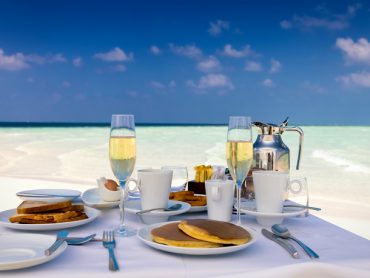Lessons Learned from Top Asian Hotels: A Wake Up Call for America
A recent tour of five Asian cities opened my eyes to how hospitality products and services should be managed. I was really taken aback. Backed by strong national economies, continuously growing ADR and occupancy levels are the norm on this continent. Coming from North America, I see Asian hotels as true leaders in the industry, and there’s a lot that can be learned.
Mind you, my stay encompassed four luxury chains, including InterContinental, Shangri-La, COMO Hotels and Resorts and Four Seasons, but none appeared to be too voracious in their profit taking. Rather, all were reinvesting in their businesses and actively setting new standards. Instead of singling out any individual property or chain, I will attempt to cover some of the differentiating elements of these Asian hotels as a single entity.
- It’s All About Service: By and large, the service levels experienced in all properties were at a palpably superior level than that previously witnessed in similar North American hotels and luxury properties in Europe. This was accomplished not just through higher staff levels (anticipated), but by what appears to be a stronger and more adroit commitment to service. Little touches in areas like valet, room service, housekeeping, F&B, front desk and concierge accumulated into something far greater. In fact, try as I might, in three weeks of travel, only one service deficiency was noted, and it was trivial.
- Paying Attention to the Details: Every luxury hotel guest expects comfortable and elegant accommodations, a broad array of food choices, and service efficiencies. What sets these Asian properties apart are details normally not seen stateside. Some examples include: newspapers delivered with gloves to avoid ink stains on your hands; rather than pillow-chocolates, a small cake at turndown service; notes handed out in leather folders; multiple amenity packages including full shaving and dental kits; jewelry boxes inside the room safe; a stationery kit of goodies to help handle minor business requirements; in-room espresso maker (not just a coffeemaker); multiple lighting configurations for various times of day and ambiance; a unique two-piece martini glass set; contribution envelopes to support local charities as a deposit for your coin change; and proper folios for your departure invoice.
- Continuous Innovation: These properties continue to test new ways of improving their guest relationships through product enhancements. In one hotel, they were experimenting with a dedicated floor for couples. Another property was testing new menus. Still another was encouraging customers to create wild, new drink combinations.
- Expert Maintenance to Support Quality Construction: As expected, the woods, marble and granite used for room furnishings were all immaculate. While the properties ranged in age from 7 to over 20 years old, they all have the feeling of a newly opened hotel. This was largely a result of superb maintenance levels. No visible marks or scuffs were noted on doorframes or hallway corners. Upholstery was fresh, both in look and smell. All electronics were up-to-date and far beyond what is the norm for North America.
- Visible Leadership: Without exception, it was commonplace to see a member of senior property management in the reception area each morning, and often in the evening as well. While the primary role appeared to be greeting guests, they also served as a reassurance that the team was performing its duties. One evening, I met a general manager in the restaurant after 10PM, as he was waiting for a VIP guest to arrive from a delayed flight. Of note, he was telephoned from the arriving limousine a few minutes in advance to efficiently orchestrate the arrival.
While you may look at this list and check things off for your property as “done that,” it is the simple fact that all of these properties are accomplishing these tasks 365 days of the year, and everyone has a smile on their face. My trip to Asia was enlightening and I have many more takeaways from it. I encourage all hospitality managers from North America to find the time to travel there for a firsthand experience.
(Article by Larry Mogelonsky, published on eHotelier on October 31, 2011)



